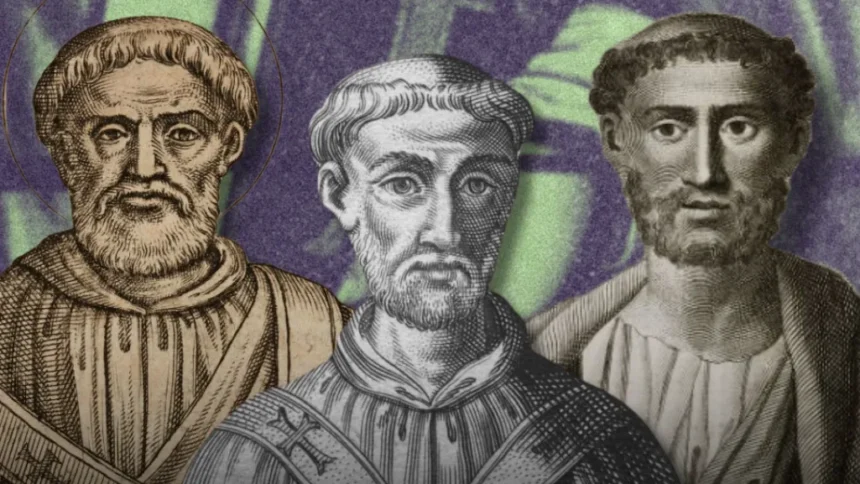The history of the Roman Catholic Church spans centuries, with 266 popes, among them popes from Africa, leading the faithful from the Vatican and beyond since antiquity.
Although, in recent times, the papacy had been dominated by European leaders — particularly from Italy– the African continent has produced popes who contributed to the rich history of Catholicism and Christianity at large.
The popes from Africa include; Victor I, Miltiades, and Gelasius I. The three popes from Africa served during the early centuries of Christianity, hailing from North Africa during the Roman Empire.
As the global community turned its attention to discussions about the next pope following Pope Francis’s passing on April 21, 2025, interest in these African popes has surged.
Already two African cardinals have emerged as notable contenders to become Pope Francis’s successor. They are, Cardinal Peter Kodwo Appiah Turkson of Ghana and Cardinal Fridolin Ambongo Besungu of the Democratic Republic of the Congo.
Pan-Atlantic Kompass in this article explores the lives, contributions, and historical context of these past popes from Africa;
- Pope Victor I: The Latin Liturgical Pioneer (189–199 AD)
According to Catholic history, Pope Victor I is one of the past popes from Africa.
He is said to have been born in the Roman province of Africa (likely between modern-day Libya and Tunisia). He served as pope from 189 to 199 AD.
Victor I’s papacy is remembered for standardizing the celebration of Easter. He was said to be the pope who resolved a major dispute between Eastern and Western churches over the date of Easter.
His decision to celebrate Easter on Sundays rather than on the day Jews celebrated Passover, which could fall on different days of the week, remains the standard today.
Victor I also made Latin the official language of the Roman liturgy, moving from the Greek used in early Christian worship. This change laid the groundwork for the Latin Mass, which dominated Catholic worship for centuries.
2. Pope Miltiades: The Pope of Legalization (311–314 AD)
Pope Miltiades, who served from 311 to 314 AD, is also another past pope from Africa.
Born in North Africa, likely in the region of modern-day Algeria or Tunisia, Miltiades led the Church during a transformative period.
His papacy coincided with Emperor Constantine’s Edict of Milan in 313 AD, which legalized Christianity across the Roman Empire, ending centuries of persecution.
Miltiades oversaw the Church’s transition from an underground movement to a recognized institution.
Miltiades was given a palace by the Roman Emperor Constantine, becoming the first pope to have an official residence.
He was also granted permission by Constantine to build the Lateran Basilica, now the oldest public church in Rome.
While modern popes live and work in the Vatican, the Lateran church is sometimes referred to in Catholicism as “the mother of all churches”.
3. Pope Gelasius I: The Vicar of Christ (492–496 AD)
The third past pope from Africa is Gelasius I, who served from 492 to 496 AD and is considered the most influential of the trio.
While some historians debate whether he was born in Rome or North Africa, his African heritage is widely acknowledged, with his family likely originating from the Roman province of Africa.
Gelasius I is celebrated as the first pope to be officially titled the “Vicar of Christ,” a term which means “the pope’s role as Christ’s earthly representative.”
Gelasius I was a prolific writer, producing theological treatises and letters that clarified Church doctrine and governance.
He implemented a theory, which was the separation of the Church from the state. He articulated the “two swords” theory, which argued that spiritual authority (the Church) and temporal authority (the state) should remain distinct.
Also, Gelasius I is remembered for his response to the Acacian Schism – a split between the Eastern and Western Christian Churches from 484 to 519.
During this period, Gelasius I asserted the supremacy of Rome and the papacy over the entire Church, East and West, which experts believe went further than any of his predecessors.
Gelasius is also responsible for a popular celebration which is still marked every year – establishing St Valentine’s Day on 14 February in 496 to commemorate the Christian martyr St Valentine.
Some accounts say Valentine was a priest who continued to perform weddings in secret when they were banned by Emperor Claudius II.





